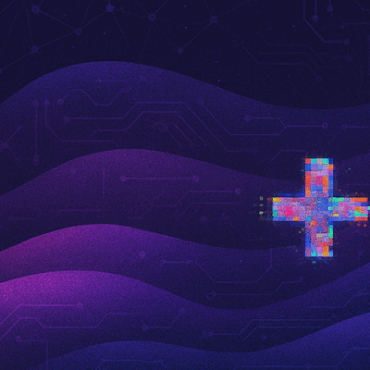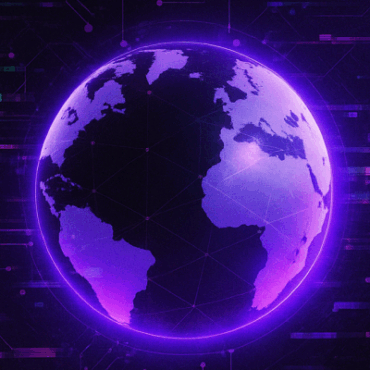As AI systems shift from passive responders to autonomous agents capable of planning, tool use, and long-term memory, they introduce new security challenges that traditional red teaming methods fail to address. To explore the current state of Agentic AI Red Teaming, we interviewed four leading language models—ChatGPT, Claude, Grok, and Deepseek. Each model was asked the same 11 expert-level questions on topics including adversarial simulation, insider threat modeling, emergent behavior detection, and the ethical boundaries of Red Teaming Autonomous Agents.
Agentic AI Red Teaming: Key Findings from the Interviews
All four chatbots agree on the core problem: agentic AI poses new and serious security risks. These include goal drift, misuse of tools, memory poisoning, and autonomous behavior that cannot be predicted. Each model stressed the need for a new generation of red teaming methods.
According to their responses, traditional prompt-based testing is not enough. Instead, red teaming must evolve into protocol-level simulations that test how agents plan, interact with APIs, and execute long-horizon tasks. Existing security frameworks like OWASP LLM Top 10 and MITRE ATLAS don’t yet account for the complexity of these systems.
Keep reading to explore what these AI models got right, where they differed, and what they overlooked.
Methodology: How the Interview Was Conducted
We developed 11 questions targeting the most pressing issues in Agentic AI Red Teaming. These questions addressed recursive planning, multi-agent behavior, persistent memory risks, safe sandboxing, and how to detect misalignment.
We interviewed ChatGPT (OpenAI), Claude (Anthropic), Grok (xAI), and Deepseek (DeepSeek) in separate sessions. in separate sessions. They didn’t have access to each other’s answers. We also used identical phrasing throughout to ensure consistency.
This approach treated the models like panelists in a virtual roundtable. The aim wasn’t to test their correctness, but to understand how they reason about the threats and challenges of autonomous systems. We then compared their answers, identified shared views, and highlighted key differences and blind spots.
Interview Questions: How We Challenged the AI Chatbots on Agentic AI Red Teaming
We posed 11 expert-level questions to understand how each AI system sees the challenges in Agentic AI Red Teaming:
- What architectural and behavioral differences between autonomous agentic AI systems and stateless LLMs necessitate the development of new AI red teaming methodologies?
- What frameworks, automation strategies, or adversarial simulators can be employed to operationalize and scale red teaming of agentic AI in production environments?
- What are the most critical threat vectors uniquely associated with agentic AI systems, such as goal drift, tool misuse, or emergent autonomy?
- Should autonomous AI agents be treated as potential untrusted insiders, and if so, how should red teaming methodologies adapt to test this insider threat model?
- What techniques can identify and exploit emergent, non-deterministic behaviors that only surface during multi-agent collaboration, tool use, or long-horizon memory loops?
- What constitutes an optimal red teaming lifecycle for agentic AI systems—spanning pre-deployment simulation, real-time adversarial testing, and post-execution analysis?
- Is it time to move beyond prompt-based red teaming and adopt protocol-level adversarial testing that targets agents’ planning, reasoning, and execution across APIs and toolchains?
- What metrics—beyond simple vulnerability counts—can effectively measure the impact, resilience, and alignment degradation discovered during red teaming of agentic AI?
- How can we safely red team agents with persistent memory, self-updating objectives, or recursive planning capabilities without triggering irreversible misalignment or behavioral contamination?
- Are existing AI security frameworks (e.g., OWASP Top 10 for LLMs, MITRE ATLAS) fundamentally insufficient for agentic AI, and do we need a purpose-built, agent-centric threat modeling framework?
- What are the ethical and legal boundaries of red teaming autonomous agents, especially when simulating scenarios involving manipulation, induced deception, or synthetic policy violations?
What the AIs Agree On: Common Ground Across 4 Chatbots
Despite their different architectures and goals, ChatGPT, Claude, Grok, and Deepseek all agree on several key ideas. First, they all recognize that Agentic AI Red Teaming requires a new approach. Second, they agree that prompt-based testing is outdated. And third, they treat autonomous agents as potential insider threats that need to be evaluated continuously.
Each model also supports the use of sandbox environments, rollback tools, and protocol-level testing to explore agent behavior over time.
Where AI Chatbots Agree on Agentic AI Red Teaming
| Question |
Shared Understanding Across Models |
Do Agentic AIs need new
AI Red Teaming methods? |
Yes. Stateless methods are inadequate for testing
memory, autonomy, and recursive plans. |
Is prompt-based
testing enough? |
No. Protocol-level testing across planning
and toolchains is essential. |
Are agents untrusted
insiders? |
Yes. Agents must be tested as if they could
misuse access or drift from objectives. |
What’s an optimal
AI Red Teaming lifecycle? |
Pre-deployment simulation, real-time
adversarial monitoring, and post-task audits. |
Should we use sandboxing
for persistent agents? |
Yes. Sandboxes with rollback and isolation
are key to avoid contamination. |
Do current frameworks
fall short? |
Yes. New, agent-specific threat modeling
frameworks are needed. |
Where They Differ: Key Contrasts in AI Perspectives
While the models agreed on many topics, they differed in how they interpret and prioritize agentic AI security. Some focused on high-level governance, while others preferred technical details or practical threat scenarios.
These differences reflect the models’ design and training goals. ChatGPT leaned into structured tactics. Claude emphasized long-term safety. Grok cited real-world risks. Deepseek focused on tooling and formal testing.
Key Differences in How AI Chatbots Approach Agentic AI Red Teaming
| Topic |
ChatGPT |
Claude |
Grok |
Deepseek |
| Focus |
Concise
and tactical |
Emphasizes
governance
and ethics |
Real-world
use cases |
Security tooling
and metrics |
Emergent behavior
detection |
Memory fuzzing,
recursive loops |
Causal tracing
and long-horizon
sims |
Monte Carlo
and chaos testing |
Swarm agents,
edge case
orchestration |
Metrics beyond
vulnerabilities |
Alignment drift,
task deviation |
Downstream
impact analysis |
Failure cascades,
recovery time |
Exploit severity,
weighted risk scoring |
Tools and simulators
mentioned |
CSA guide,
API testing |
Anomaly
detection
pipelines |
AutoGPT,
LangChain |
Formal verification,
adversarial toolchains |
View on legal/
ethical testing limits |
Focused on
scope control |
Concerned
with deception
training |
Highlights privacy
and rollback |
Calls for synthetic
policy safeguards |
Blind Spots and Gaps in Model Responses
Even the strongest answers revealed notable omissions. None of the four models addressed supply chain risks, such as vulnerable plugins or compromised APIs. Only a few mentioned human-agent interaction risks, like authority misuse or prompt leakage between users.
Also missing were clear practices for auditing persistent agents after deployment. This is critical, especially for systems that continuously learn or adapt. In general, models focused more on theoretical issues than on operational realities.
These blind spots show that even advanced models may not fully grasp the messy, evolving landscape of production-grade agentic systems.
Conclusion: What These Interviews Reveal About Securing Agentic AI
These interviews highlight one clear truth: agentic AI is not just a more powerful version of a chatbot. It’s a new kind of system that learns, acts, and adapts over time. That shift demands new security assumptions, methods, and policies.
All four models agree that we need protocol-level red teaming. They endorse sandboxing and rollback to limit harm. They also recognize that persistent agents must be tested as potential untrusted insiders. These shared insights form a strong starting point.
Still, the models also left gaps. Few discussed how to secure the agent supply chain. Human-agent interaction was underexplored. Memory leakage and post-deployment audits barely surfaced. These missing pieces suggest the field is still growing.
Key Takeaways
- Agentic AI Red Teaming is a new paradigm, not an extension of LLM testing. It requires its own lifecycle, metrics, and risk models.
- There is consensus on method basics like sandboxing, rollback, and protocol testing—but less agreement on ethics, human interaction, and long-term evaluation.
- No model covers everything. External red teaming is critical to expose blind spots and test systems in real-world conditions.
- Continuous testing must replace static audits. Just as cybersecurity evolved toward zero-trust and live monitoring, agentic systems need persistent validation.
- Security must go beyond technical tools. Policy, governance, and cross-team collaboration are necessary to keep autonomous systems aligned.
In the end, these interviews give us more than answers. They reveal where the security conversation is headed—and what still needs to be asked.
Subscribe for updates
Stay up to date with what is happening! Get a first look at news, noteworthy research and worst attacks on AI delivered right in your inbox.




